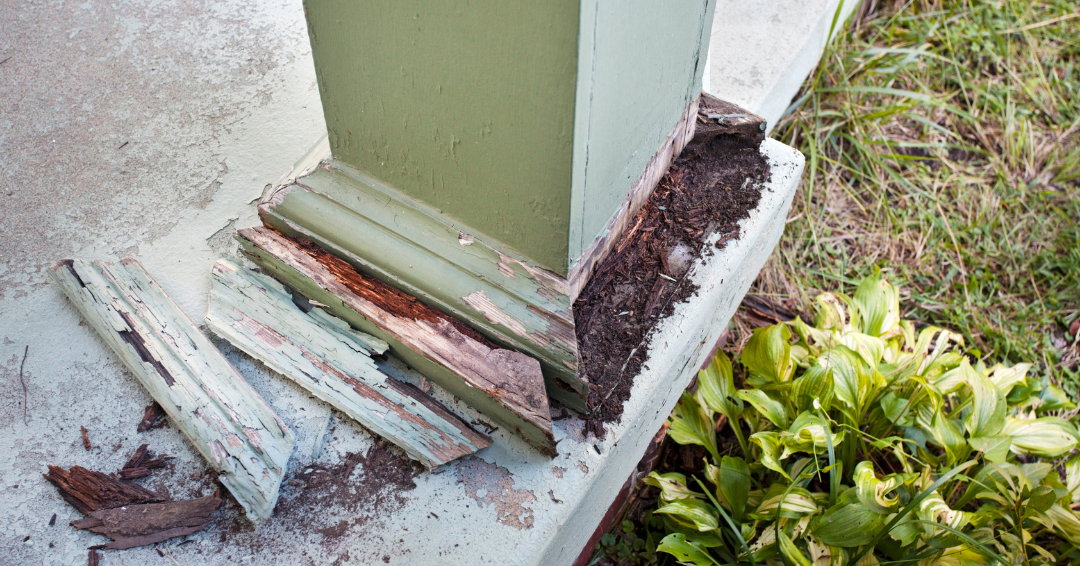
Termite feeding damage on home.
Coming to Terms with Termites
This winter, I found termites feeding on a section of wood trim in my home. They had appeared out of nowhere and although I was certainly concerned, termites often aren’t as formidable as they seem. Three main types of termites can be found in Utah, including dampwood termites, drywood termites, and subterranean termites. Termites are social insects that live in colonies and have a caste system that includes workers, soldiers, swarmers (winged), and queens/kings, each of which has its own role to fulfill. In general, termites are small (0.5 – 2 cm), brown to black insects that superficially resemble ants, and can be either winged or unwinged.
Differences between ants and termites can be seen in the antennae and wings. Ants have elbowed (bent) antennae while termites have straight antennae, and ants have two small wings and two large wings while termites have four wings of equal size.
Dampwood and drywood termites are both uncommon in Utah. Dampwood termites infest decaying wood with high moisture content. Because of the need for moist wood to make nests and feed, they are more likely to infest rotting logs than human structures. However, keeping your home free of long-standing water damage is important to prevent infestation. Drywood termites make nests inside of dry wood including wood inside walls and roofs of structures and dry wood in the wild.
Subterranean termite is the most common type of termite in Utah. They cannot make nests inside of wood. Instead, they nest underground, sometimes more than 15 feet below the surface. Workers voyage out from the nest to search for food sources such as wood inside human structures. Subterranean termites enter homes through cracks in foundations, or by creating mud tubes that allow them to travel above-ground. Mud tubes protect termites from the air, sun, and other weather conditions that can dry them out. Mud tubes in and around the house indicate the presence of subterranean termites. You may be concerned that if you find mud tubes or termites that the building is dangerous to live or work in. This is usually not the case. Termite colonies take several years to get to a structurally damaging size. Fortunately, there are effective methods for managing termites.Yearly termite inspections can be helpful to stay ahead of potential infestations. You can do a quick yearly inspection in and around structures for mud tubes and check for other visible signs of infestation such as bubbling wall paint or clumpy brown debris near decorative or structural wood. Basements and crawl spaces are often key locations to check for termites and signs of infestations. However, only check tight spaces if it is safe to do so, and someone is nearby to
assist. For the best results, a professional pest control technician is the best resource for thorough termite inspections and management. At my house, just a single visit by a professional technician removed all traces of termites inside, and the bait stations they strategically placed around the perimeter of the house will prevent further infestations. The company provided peace of mind by being extremely thorough to ensure the infestation is completely terminated and to prevent a reinfestation.
While termites can do a lot of damage to structures over time, the signs can be easy to spot and treat before it is too late. They are otherwise harmless insects and cannot bite, sting, or harm your pets. You can even eat them, and if prepared properly, they taste like pineapple (speaking from experience)! If you need help identifying an insect found in or around your home, or want more information, contact the Utah Plant Pest Diagnostic Lab (UPPDL).
- Zach Schumm, Arthropod Diagnostician

